Moc Hoa Special Forces Camp
It was one of those hot and sunny days in southern Vietnam, the ones that completely drains you. The Plain of Reeds in the Mekong Delta doesn’t offer much shade from trees as it consists more or less only of open fields demarcated by the canals. Keeping the concentration up while driving here is crucial as the slightest lapse can cause you to hit one of the many obstacles that has made the Vietnamese roads infamous. Buffalos, trucks, other motorbikes and deep potholes can turn your beautiful countryside drive in to a very bad day.
The Plain of Reeds is located in the northern Mekong Delta, in the Long An and Dong Thap provinces, bordering to Cambodia. During the conflicts of last century, this area played a crucial role. The Viet Minh, The Viet Cong and other armed groups of different allegiances used the area as a sanctuary, staying hidden from government forces. This of course meant that lots of fighting also took place here as numerous missions were launched in to the area to try to weed them out.
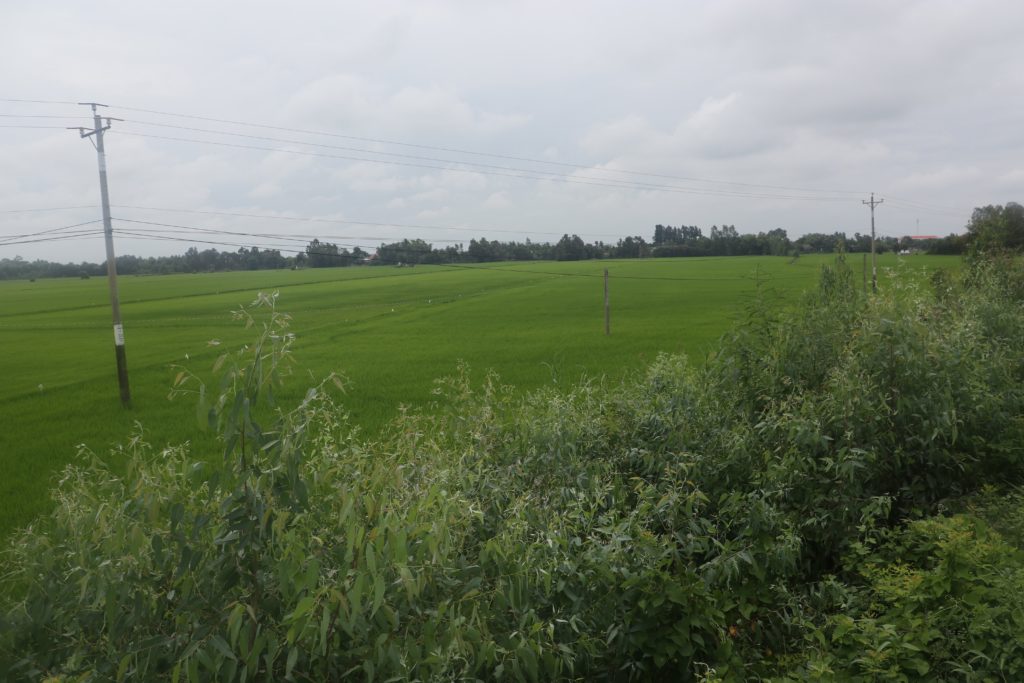
During the Vietnam War this area was an important part of the supply network for VC and PAVN forces operating in the Mekong Delta. Fresh troops, food and ammunition was smuggled along the canals and over land from Cambodia just across the border. In response to this, US military leadership decided to establish a number of camps in different strategic locations to try to stop or at least limit the influx of supplies and troops.
This hot day we were going to visit one of those camps, just a few kilometers from the Cambodian border and right by the area called “Parrots Beak” by US forces. The camp was once the Moc Hoa Special Forces Camp, at the time it was established in 1963 it was named A-414 and in 1965 it was upgraded to a B camp and was designated B-41. In 1966 it became the home of the Mobile Strike Force (Mike Force) for IV-Corps. MACV-SOG also ran reconnaissance operations in to Cambodia from the camp.
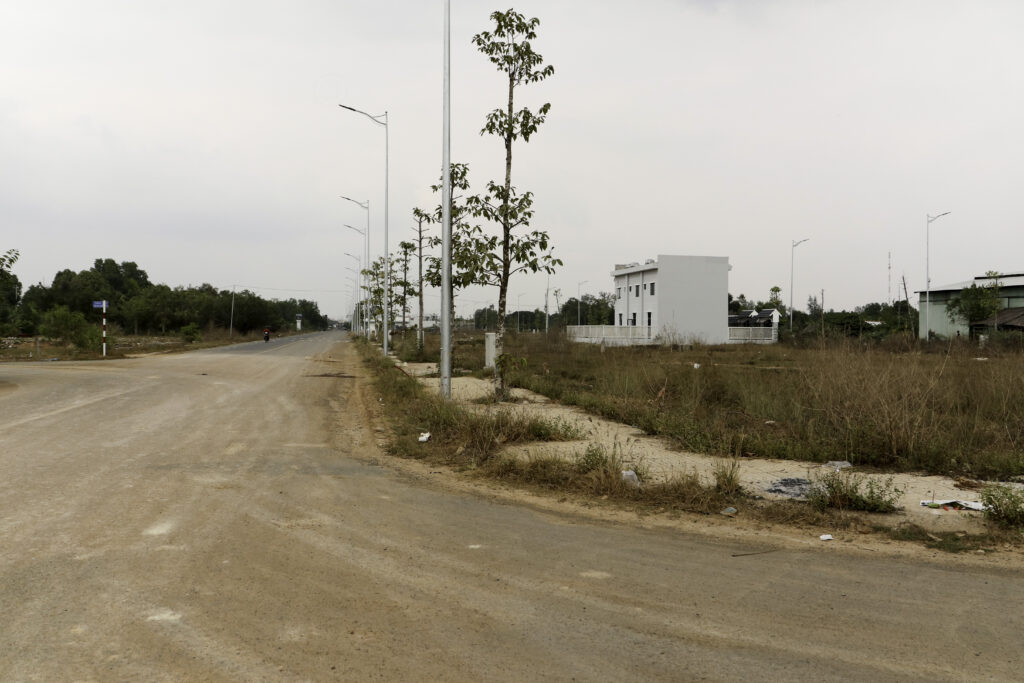
This camp was in the epicenter of the activities described above. It covered one of the main routes towards Saigon as well as the densely populated and strategically important Mekong Delta. This was a very dangerous area.
As we travel Vietnam, discovering historical sites of the wars of last century, visiting Moc Hoa has long been high up on the list of sites we want to go to. Understanding what happened here is important to understand the war in the south. Visiting a site like this, getting a feel for how remote and exposed it was, is humbling. Only kilometers away across the border were large contingents of PAVN forces just waiting to come and get you. On the other side the VC were constantly planning and executing probes and attacks on the camp. The level of activity was constantly high with brown navy boats patrolling the canals, aircraft patrolling the air and land missions were launched in order to keep the enemy at a safe distance.
With an already long day behind us and three more hours to drive to get back to Saigon, we approached the little town of Kien Tuong where the camp was located. It is a typical Vietnamese rural town. It is also very typical for a border town in that there is a palpable government and army presence. There is always a strange atmosphere in these places. A sense of another era, before the country opened up for business, with new liberties and opportunities for urban Vietnamese. The development the last decade has clearly escaped this area.
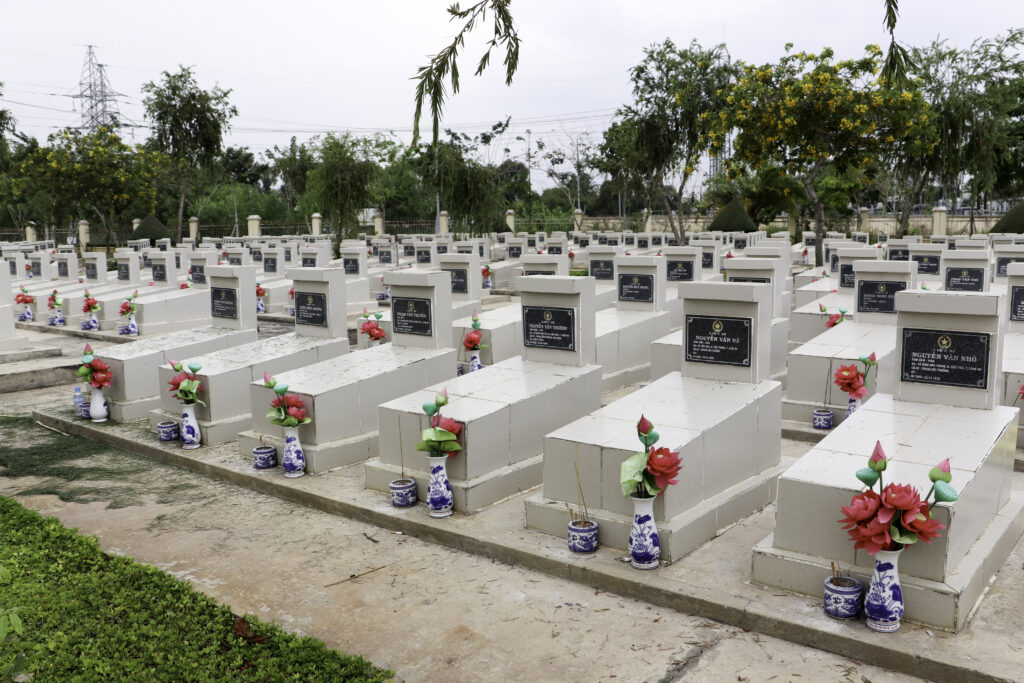
We approached from the south. Before reaching town we spotted a military cemetery on the left side of the road. These cemeteries can be found all over the country and bear witness of the immense sacrifices that were made by the Vietnamese people*. We stopped to pay our respects. Walking among hundreds of graves, reading the inscriptions with the names of the soldiers and dates they were killed, makes the war more comprehensible. These men and women died here.
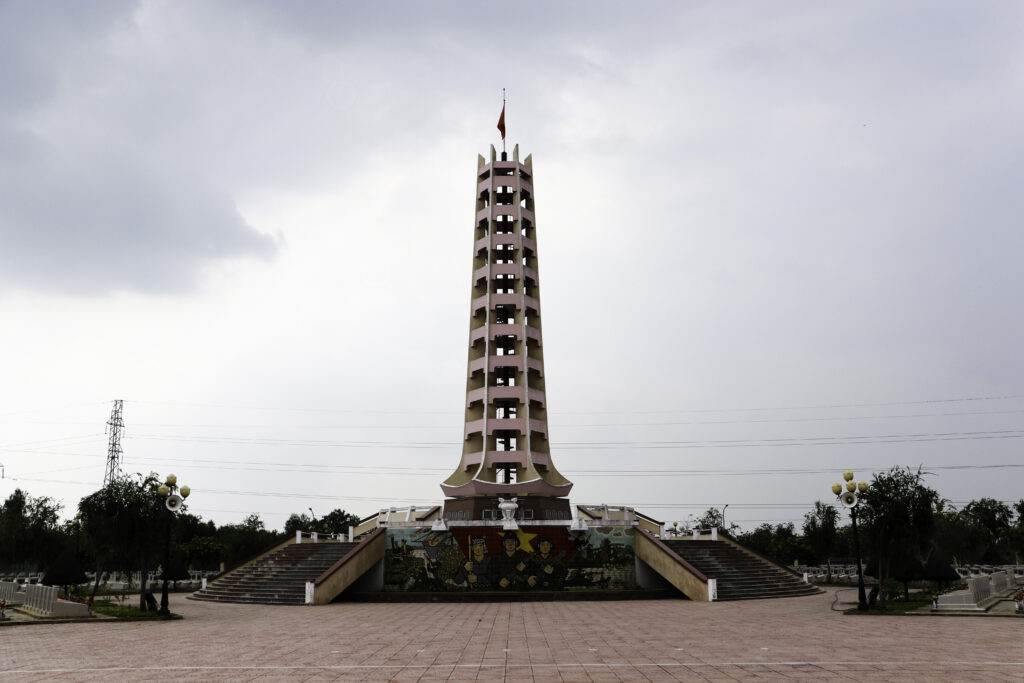
We continued the last couple of kilometers towards town and turned south towards the old base area. It is clear that this little town has grown a lot the last years. The base area on the east side of the runway is developed, there are boulevards, parks and residential areas. Also a monument of some sorts that we don’t really know what it is for.
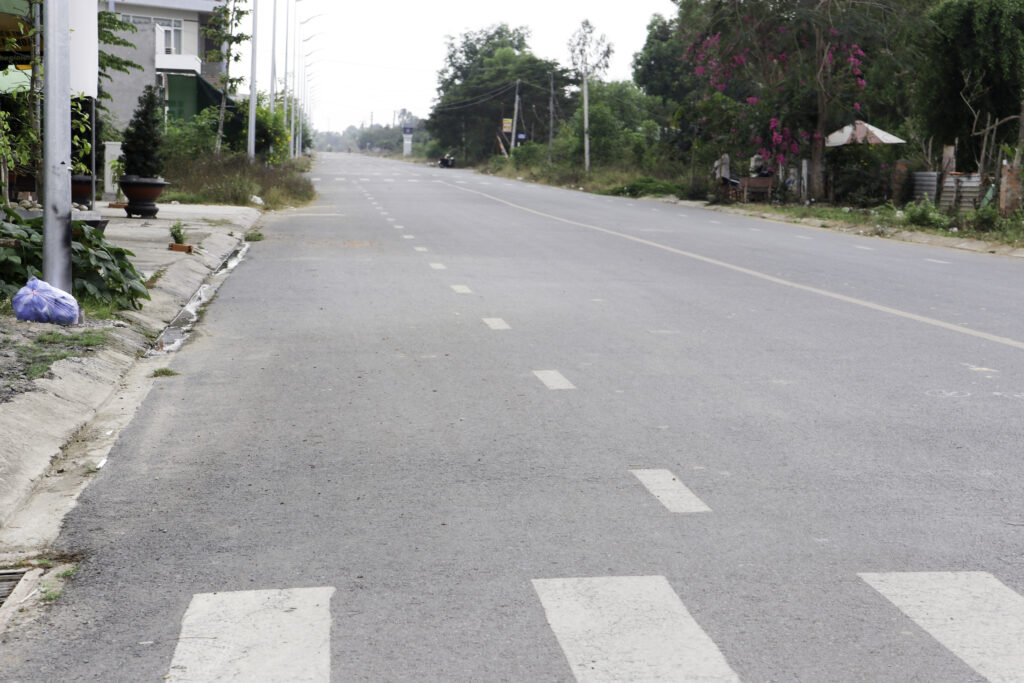
We then turned towards the runway along a small road and as it opened up, we realized this is also a developing area of the town. The packed dirt of the runway is bordered by two paved roads the whole stretch. On the runway itself, there are some residential homes built. It looks a bit off, but the plots aren’t that bad. We stopped at the south end of the runway and as in pictures we have seen from the era, it looks the same with open fields and some low brush. Coming back north we looked for traces of the original square A-Camp area, but also that was built up. Perhaps a closer look would reveal some of the old berms, but it looked highly unlikely.
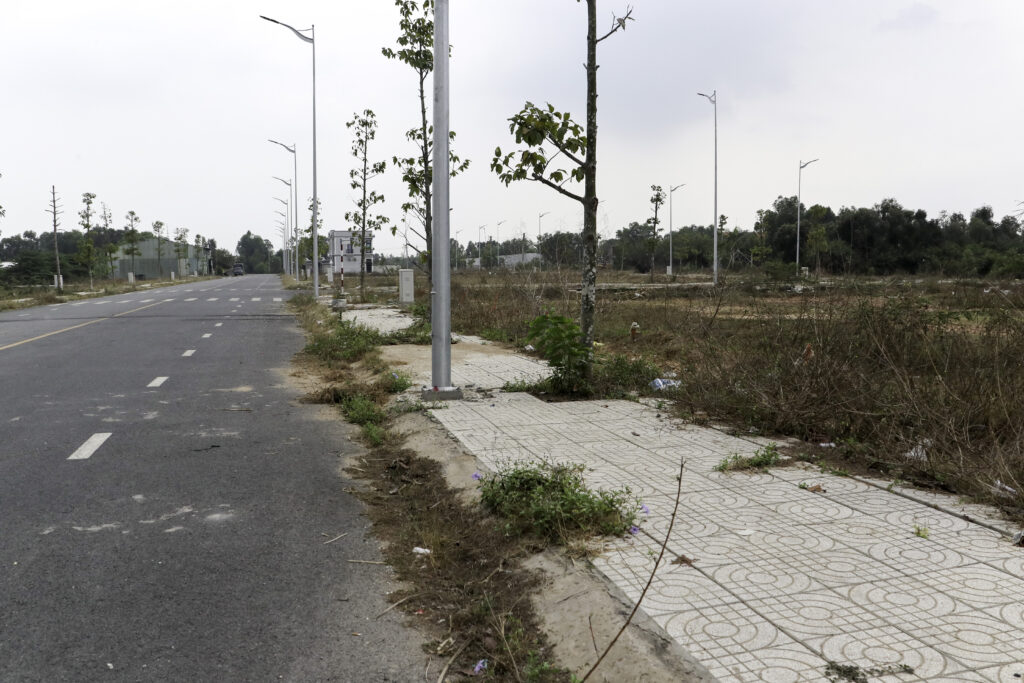
Our best assumption is that nothing of the old camp is left except the roads along the old layout. In the packed dirt there might be items to discover, but overall the town of Kien Tuong has taken over. It is still a good visit though and anyone coming through the area is well advised to make a stop here.
The drive back to Saigon was as difficult as they come in Vietnam. With heavy traffic under a merciless sun and the dehydration reaching dangerous levels, I tried to stay focused so I would make it back in one piece. We had to balance going safe and slow with also keeping the pace up so we didn’t have to drive in the dark which multiplies the dangers of the Vietnamese traffic. We limited ourselves to one stop only for a drink. During the drive back, we passed countless of old camps, battlefields and other places of significant events. Most of them have fallen victim to development and time itself. Vietnam is rapidly changing and although too many of the old war sites have disappeared, the history is constantly present and there to discover.
JT
How to get there
Moc Hoa Special Forces Camp is located in the little town of Kien Tuong about 110 kilometers from Saigon.
Decimal coordonates: 10.766184 105.936763
*Up until not long ago, cemeteries with Saigon soldiers were off limits and many had been removed to leave space for urban development. This is changing now and people are allowed to also come and pay their respects for the fallen soldiers of the Saigon side.
I was assigned to MACV team 85 up the road from the SF camp and the navy riverine force from May 1970 to May 1971. I worked in the communications center next to the tall signal tower. My hooch was write next to the airfield runway. I remember going to a USO show at SF camp and the mortar pit at the camp. I stayed in the army reserve and retired as a sergeant major.
My name is Gordon Lee I was CO of A414 Thanh Tri august to december of 1969 then at B41 Moc Hoa until august 1970
Jim,
I think I know you, I was work for Development with Richard W White, he is was Province Senior Advisor in Moc Hoa.
He’s a nice supervisor. My two sister work there too!. I always thinking about Mochoa. My dad worked at the hospital (Vietnamese).
Thank you for all served my country. My heart go to all of you.
I found this page while researching my father’s time in Vietnam. My dad was the ODA414 Team Sergeant from 67-68 and operated out of Moc Hoa.
My dad was there at the same time. He was a captain and ran 3 field hospitals there. They must have known each other. I’m planning a trip there this year. I’d love to talk to you.
XO Shannon Growney
Very interesting information!Perfect just what I was looking for!
I flew gunships, 121st AHC, Viking gun platoon, July 67-July 68. Anytime we went to Moc Hoa knew it would be interesting…
I arrived to B-41 Moc Hoa following Tet in 1968, after first attending Recondo training at Nha Trang. I was a green 1st LT, just turned 20, and was assigned to be Assistant S-2 for Kien Tuong Province. A few months later was assigned to A-414 Thanh Tri as XO. What a lovely adventure. I served as XO under three or four captains who were our team COs.
Our team was instrumental in the unfolding of the infamous “Green Beret Affair.” Captain Marasco aka Robert A. Martin and two others from SF’s Project GAMMA were assigned to and operated out of our A-camp — under cover as a CAPO team: Civic Action Psychological Operations . Marasco was the alleged trigger man who eliminated the triple agent Thai Khac Chuyen — fascinating story, told objectively in hindsight, here: https://sofrep.com/specialoperations/the-green-beret-affair-project-gamma-a-massive-snafu-for-the-army/
I’d signed up for a second tour, was promoted to captain, but was reassigned to our D-Team in Can Tho upon returning from a leave stateside, so missed the disastrous aftermath that came down at A-414 during the rest of 1969. I was told that A-414 became one of the first camps to be “Vietnamized” [read: turned over to the Vietnamese] once our Vietnamese SF counterparts — who we could not trust — learned that we had been running a unilateral intelligence network out of A-414, supposedly without their knowledge. They knew, thus the “triple agent” tag.
There will be a Zoom call in a few days among vets of Moc Hoa and Than Tri with Stephen Sherman, who arguably has kept up with SF history better than anyone else. I just looked at the roster of B=41 SF vets, here: https://www.specialforcesbooks.com/B41.htm. Interestingly, after 50-plus years not a single B-41 Detachment CO, XO, or SGT Major is still with us — all deceased! Some of us survived that Plain of Reeds experience or we wouldn’t be reminiscing here. Cheers!
Will….As an Air Force FAC attached to B-41 I located Col. Becks wreckage location. Also was in Can Tho when Maj. Ken Hamrick (Bomber 30) was lost working an Air Strike at Ap Bac in August of 69, That day I was completing some in country familiarization training at the IV Corps Direct Air Support Center returning to Moc Hoa that day to join Lt. Dave Burke (Bomber 31) to assist cleaning up that situation. Dave made the Air Force a career and retired as a Colonel. He passed away two years ago from head injuries in a freak accident (tripped and fell down the stairs of his RV) at Colorado Springs. Kien Toung Provence was always an “interesting” area to patrol and direct air strikes. I survived my 10 months at Moc Hoa and finished my 5 year Air Force Pilot Training commitment (Most Army folk were probably not aware that Air Force Pilots trained for a year in Pilot Training including 6 months in the supersonic T-38 ….the duty assignment brought some of us to the 0-1 which turned out to be one of the most memorable experiences of my life.) After the Air Force I was hired by Delta Air Lines in February of 73 and retired as an International B-767-400 Captain on September 1, 2003. I have some interesting recce pictures from 69-70 if anyone is interested…..J P Doyle…Bomber 32…7/69 to 4/70.
Hello Jim.
Thank you for your comment. I also got your email. I will respond and look forward to learn from you.
Jonas, founder of Namwartravel
I want to commend you on this page. I was not in Moc Hoa, but was up the road (river) a few clicks at Tuyen Nhon ATSB (Navy) but knew a couple of the guys at A415. I had no idea how small our ATSB was at Tuyen Nhon until I took a boat ride up to visit a buddy of mine who was stationed at ATSB Moc Hoa. Dang that base was huge. Tuyen Nhon was the size of a football field only.
Again, congrats to the maker of this page. Great to see at least part of the area on video. There is nothing comparable for the Tuyen Nhon area.
Welcome home brothers.
Thank you for the kind words Thomas. It means a lot to us.
I have never heard of Tuyen Nhon before, I will try to find more information and read up. If you have any additional information you want to share, you can always email me at [email protected]
/Jonas, founder of namwartravel.com
Thomas, My Name is Antonio Lopez Jr, I was station in ATSB Tuyen Nhon in Dec1969- Sept 1970. I remember it well.
I was stationed in moc hoa from may 69 to feb 70 on pbr’s and can find no history of riv di 511 ever being there . It was a bad place lots of gun fights. Any help would be great.
Hi, I was there in Moc hoa with River division 511 from 1969-1970 . Bad place true lots of firefights.not mention very much don’t know why.
Bob….I was attached to B-41 from August 69 through April 70 as an Air Force Forward Air Controller. (Call Sign Bomber 32) My first room mate at B-41 was the NILO. He gave me a tour of your boats that was very memorable….seems you guys tossed frag grenades out into the Vam Co Tay every once in a while. I was down below enjoying a cup of coffee with you guys when someone chose that particular moment to toss a warning to Charlie. Imagine the buzz the tower scene in Top Gun and not only did my coffee “spill” but I picked myself up off the deck to gales of laughter! Enjoyed spotting for the PBR’s on occasion and coordinating with the Black Ponies.
Bob, I was also on PBRs 69 & 70. I was an EN 2 & capt of 36 boat and I think 101 boat.
I was with HHC 93rd Engineers. As a Spec5 I was slowed in the special forces camps bar and would pick up movies to show the guys at our camp. We were set up at the old Soccer field. The Army thought they wanted to build a bigger base camp there and we were there to lay out roads and building sites. Was there late 68 to early 69. Some general decided not camp so we pulled out back to Dong Tam. Did my 19 months and home. Once we got word that the whole NVA RAG. was coming off the beak to attack Diagonal. We were on pins and needles for a couple of days but the division bypassed us to hit farther south,
I was drafted in 1968 did basic at Ft. Ord and AIT at Ft. Leonardwood. After Engineer training was stationed in Germany assigned to the 317th Engineer Bn.
After a cold snowy winter I got homesick for Southern California sun shine, at that time if you volunteered to go to Vietnam you would get a 45 day leave so off I went.
When I arrived Cam Rahn Bay Vietnam we waited to be assigned in a large group, I was with two friends I met on the way there. A green beret walked up to the front of the room carrying three M2 carbines and ammo, I looked at my two buddy’s and said I wouldn’t envy the guy going with him and thats when they called our names.
After training on Hon Tre Island we were assigned to Can Tho from there I went to B41 Moc Hoa . I was only a Spec4 I supervised a group of Vietnamese women a squad of Vietnamese soldiers that took care of daily maintenance and construction in B41 (Camp George O`Toole) , unloaded aircraft, destroyed dud ordinance left on the
runway. I would accompany supplies, movies and mail to A teams by helicopter and boat. Filled in on a airboat mission from local A team,my ears are still ringing.
If I had to do it again I would request Pres. Clinton, Obama, Trump and Biden accompany me they could use some of the life’s lessons I learned.
I arrived at Mic Hoa in Sept. 1966 via helicopter from Can Tho. The entire Delta was flooded. I was taken to B 41 then by boat down the runway to A 414. General Westmoreland arrived by helicopter at 414 and we exchanged salutes as he got on a boat to go to the B team. We ran an operation with assault boats and helicopter support as advisors south of Moc Hoa soon after. The Vietnamese commander refused to engage printing to XO to yell the hell out of him. We had two types of outboard motors. The Evenrudes worked find but we’re purely civilian construct. The Johnson’s, built to army military specs kept stalling out. I kept insisting the Vietnamese CIDG keep them running to little success. In November that motor cost an American his life.
Then Mike Force Airboats came in and we practiced with them. On an operation on Nov 14 Airboats and assault boats took two Americans KIA and one WIA out of six. I wasn’t wounded. One of the KIA was in a stalled out assault boat. He got three in the chest. The SFC got s bullet almost between the eyes. I escorted the two bodies to the morgue in Saigon for ID. They were the only bodies in the morgue. A whole long row of empty slabs.
Six days later we went into Cambodia with Airboats and hovercraft and helicopters and killed 56 Communists caught by surprise, but when it was found out we were in Cambodia we were ordered to withdraw. General Abrams came by the next day for a debriefing.
I was there when John and David were killed also. A sad day in all of our lives. I was with the medical company stationed there and shortly after the floods was sent to Kinh Quan 2 where I stayed until I went back home. I bunked at A414 and that is where I met both John and David.
Curious.. I was good friends with Xavier Byrne, He was a medic at KQII when I was there. Did you know him ? I was going to look him up several years ago but found out he had died (Not during the war)
My Uncle was a SF medic in A-402. Unfortunately he died in Jan., 1969. I have always wondered what his Base camp and living conditions were like. Thank you for sharing your photos. A much bigger thank you and Welcome Home to the veterans who have posted above!! I have always appreciated you guys!!
I was a Special Forces aidman stationed at A-414 from Sept. 1966 to Sept. 1967 at Moc Hoa next to its runway. Shortly after I left and likely after the Tet offensive 414 was moved next to the Cambodian border. While at Mic Hoa the A-Team was the only A-Team in Vietnam advising South Vietnamese SF B-Team members as the space downtown where the B-Team was was too tight for all those personnel. We ran some Mike Force airboat operations and the Navy ran hovercrafts as the Delta was flooded in the fall of 1966.
Brant, thank you for your comment and for providing some interesting context. I would be very interested in knowing more about your time there.
Well, that was the most intense. Lt Duncan, soon to leave, took me around, I was only a Sp 4 though I left the army as a buck sergeant, so I could take over his psy/op duties. That’s right, I as the lowest ranking member if an A team was given the duties and those responsibilities of a first Lt. The junior members of an A team were the medics, with exceptions, and the common men, with exceptions. We had heavy and light weapons, two in tells, the team Sergeant the XO and team commander. I missed one but it added up to 12. One XO I didn’t much like, was George O’Toole, out of West Point. That’s because he wasn’t psychologically integrated into the team. He was an officer and except for the captain, we were enlisted. Standard army but SF was NOT standard army. Good guy but KIA as commander of another team Dec. 1967.
The officers tended to rotate every few months. Duncan, though, stayed a year.
I understood John Wayne came through in 1966 before I got there. A 414 was pretty safe in its location. Jenifer Jones came through while I was there. She sat in the team bar having some refreshment not bothered at all by all the Playboy centerfolds plastered on the walls. That fall she was found beneath the cliffs at Malibu a failed suicide attempt apparently partly because of the death of her dear friend the actor Charles Beckford. She went on to marry a rich man, Simon I think, and had many more years doing good works.
I enlisted in the army for photography school at Ft. Dix but was recruited into Special Forces in Basic Training Ft. Ord CA. The basic mistake I made was to turn down on enlistment to go for four years instead of three and go to the National Security Agency which meant studying a foreign language at Monterey CA. Being a spook is better than bring shot at, even to no effect. But that was 1964. A year after I enlisted my bro, Marc, joined the Marines. After boot camp the gunny came out to the formation and said we need two men to go to the army photography school at Ft Dix. You and you. So Marc became a really great photographer who worked with Ansel Adams and published several books of his photos.
During my medical training I spent time at Ft Gordon Army hospital in GA fall of 1965 when former President Eisenhower had a heart attack or some sort of heart issue playing golf at Augusta. (He kept hitting his balls into one tree and asked it be removed but Augusta declined but thereafter it was called ” the Eisenhower tree.” It finally did die recently.) So I was asked to spend nights with him with one or two others. That was 13 nights as a PFC with a five star general before they put him on a train and shipped him off to Walter Reed but not before the brass send him the prettiest, nicest captain nurse to share my shift. So here am I with this great general President, we’ve had three, Washington, Grant and Eisenhower, but one night me out of his sight, I see amongst all the flower decorations, an elephant from my senator and hero Barry Goldwater, but in Ike’s sight, so I walk up to it and drop my green beret over its head and look up at Ike looking at me. I looked back at the elephant and back at Ike and give him at huge Eisenhower grin to beat his grins then turn and take the beret and walk out of site. A year or two later he has an article in Readers Digest in which he states he has seen America’s youth and they are great. He was thinking of me if not others too.
The last about this: the first night they took me to see him in a blocked off corridor in the old hospital from WWII he was all alone sleeping with a (now) primitive heart monitor above his head. Five years before he had been the most powerful man in the world.
When he died on March 28, 1968 I decided to stop smoking. It was my 25th birthday. I knew smoking had taken 10 years off his life. As supreme Commander in Europe he smoked 5 packs a day. Why not? He was sending Americans to their deaths. He knew it and they knew it. He smoked and they went. Such is war.
Brant,
Blast from the past.! LT Duncan here. Call me Bob. First, I was only at A-414 from June 66 through Jan 67. Prior to that I was at Hai Yen, A-411 from Jan 66 till Jun 66.
I don’t recall the Psy Ops training, but I don’t doubt it. Earlier, you described yourself as an SF aidman. You were a bit more than that! As an SF medic, you were among the best trained medics in the US Army. After you arrived at the team, you quickly established yourself as a competent and intelligent troop. That’s how you got picked.
It’s funny that our early careers appear to have been switched. I enlisted in Nov 61 for the Army Security Agency (a subset of the NSA). I was sent to the Army Language School for a year. Near the end of the year, I got interested in Special Forces and wanted to be a medic. Long story short, ASA wouldn’t release me but they did send me to an ASA support attachment assigned to the 5th SFGA. Later OCS and reassignment to SF.
Hope all is well.
Bob
Holly Cow! Bob! You took the enlistment I should have! I always wondered what happened to you. You balled me out because I took a wounded CIDG to the hospital without getting him released from my counterpart. I wasn’t sensitive to the protocol. He did die. Bomb frag to the belly. I did watch the American surgeon operate. He pulled a huge worm out of the belly and couldn’t explain how it ever even got in there. Another doctor observing got faint at the opened up belly and had to leave the room. The operation when Boyd was killed Nov. 14 I gave a Vietnamese soldier shot in the head mouth to mouth in a helicopter to no avail back to Moc Hoa. My email is [email protected]
Hi, Bob,
My father was Ret. SGM Endel Palgi. He served with Detachment B-41 in Moc Hoa and arrived there in January of 1966. He was with Co B of the 7th SFG when he retired in July of 1967. After he retired, he returned to Vietnam with the Phoenix Program. He was working with PSD/CORDS in Vinh Long when he died in 1970. I was 9 years old at the time.
Did you happen to know my father when you were with A-414, or do you know anyone from B-41 or any of the other teams stationed in Moc Hoa in 1966 who might have known him at the time? Since I don’t recall either of my parents talking much about my father’s service in Vietnam, I’d appreciate any memories of him that others might be able to share. Thanks.
Becky
Bob: I am sure that you do not know me, but I was COL Sid Berry’s (later LTG ) driver/clerk/bodyguard in My Tho from Aug ’65 thru Aug ’66. He was the SA to 7th ARVN Div and LTC Vernon Green (SF) was the DSA. The B-414 CO, Maj Yantis, routinely came to My Tho to brief COL Berry. I was one of the few on our command staff that got to get acquainted with him. Seemed like a good guy. Amazingly, I remember his name some how after all these years. I was a SP4 Infantryman who they assigned as a radio opr to the G-2 Team Sgt (MSG Nicolosi) for ops with the Div Recon Company and later as a Light Inf Wpns Advisor with one of the Battalion Advisory Teams. Two tours later (’70-’71), I returned to the Delta and was the Airfield Cmdr/Shotgun Pilot (Birdog) at Moc Hoa shortly after the SF Team and compound was closed. I always wondered what became of Maj Yantis and what his team thought of him. If you want to let me know, my email is [email protected].
I was also in the Army and was assigned at Moc Hoa from September 1967 until April 1969.
I was a Special Forces aidman stationed at A-414 from Sept. 1966 to Sept. 1967 at Moc Hoa next to its runway. Shortly after I left and likely after the Tet offensive 414 was moved next to the Cambodian border. While at Mic Hoa the A-Team was the only A-Team in Vietnam advising South Vietnamese SF B-Team members as the space downtown where the B-Team was was too tight for all those personnel. We ran some Mike Force airboat operations and the Navy ran hovercrafts as the Delta was flooded in the fall of 1966.
Did you know my father, SFC Donald Dupre? He was there sometime around the 1969-1970 timeframe. He didn’t talk about it much.
I was in the US Army and posted to Moc Hoa from Jan.—Dec. 1970
My father SFC Donald Dupre was there something around that same time. Did you happen to know him?
I left Moc Hoa B-41 in March of 1970. There was a MACV team down the road next to the Air field.
Wayne…Your name sounds familiar. I was one of the Air Force Forward Air Controllers attached to B-41 flying 0-1 Bird Dogs. (Call Sign Bomber 32) Glad to see some of us are still kickin on the sunny side of the grass!
My name is Dave brode,I was tdy to chau doc macv team 64 working electronic warfare from ha tien to moc hoa from may 1970 to June 1971.a lot of cross border incursions into Cambodia.